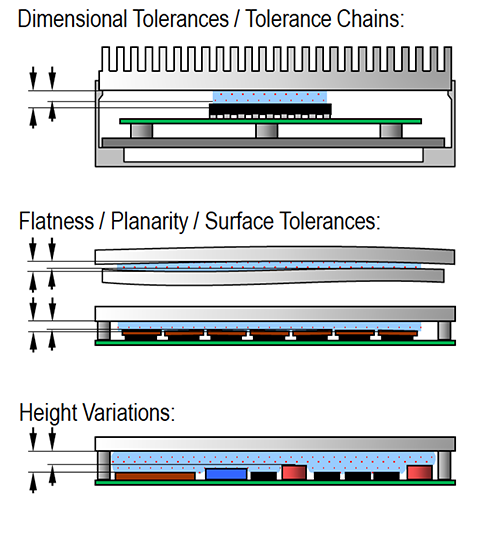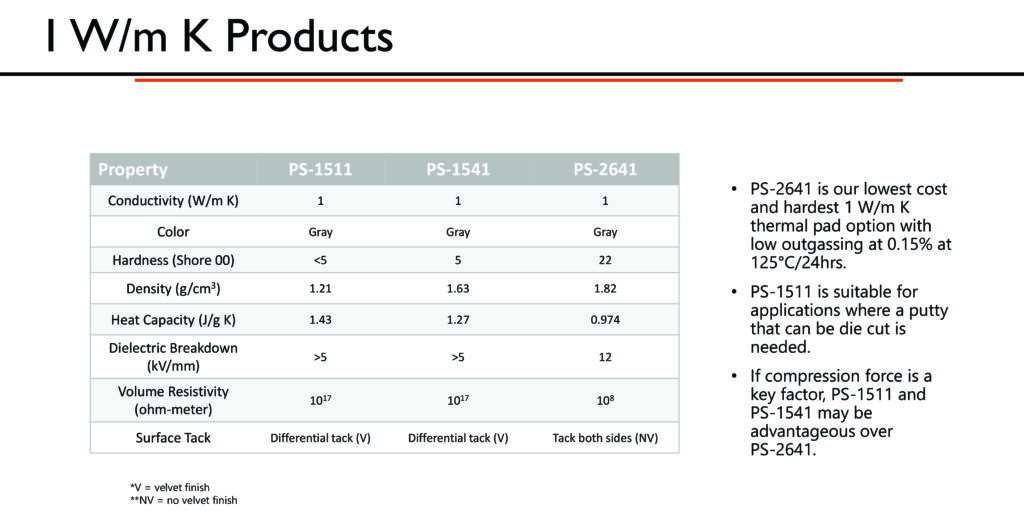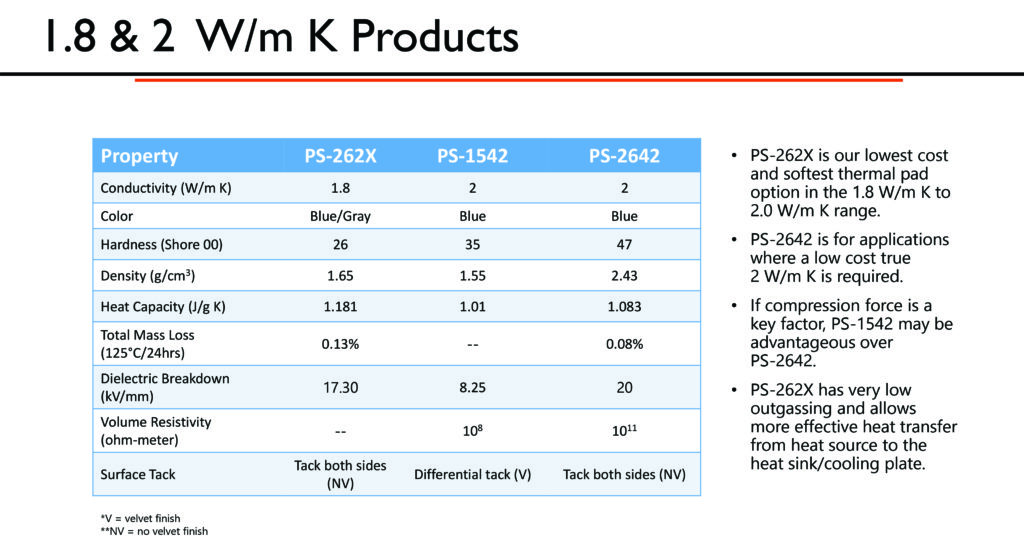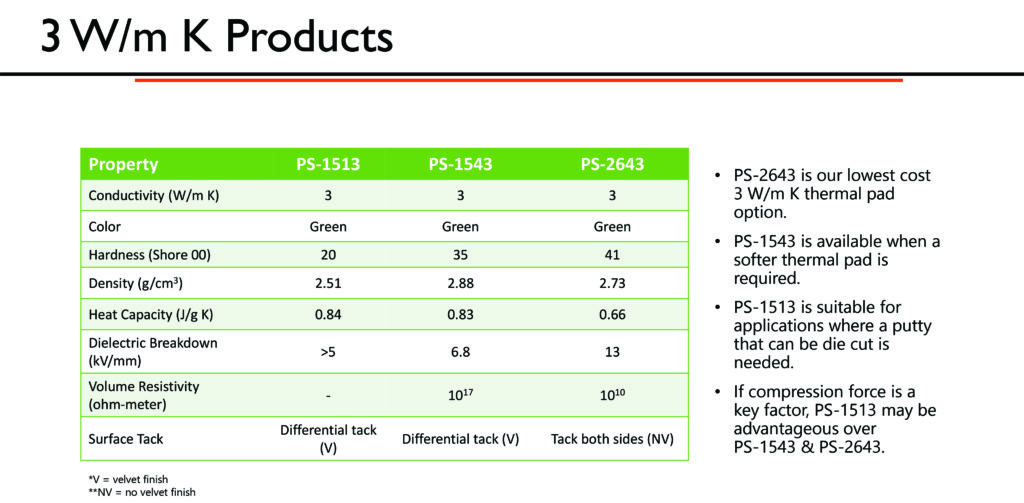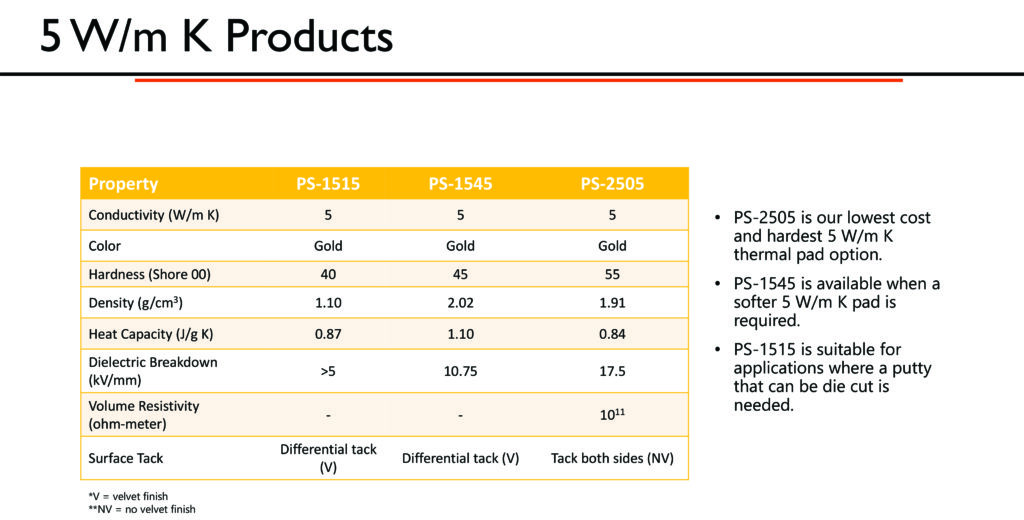Thermal Products for Electric Vehicle (EV) Applications
At Polymer Science, Inc. (PSI), we work with manufacturers across many industries. In recent years, as the electrification of the automotive industry has accelerated, there is an even greater need for our thermal interface materials (TIMs). As a company that has worked for decades in engineering more effective ways to manage the heat generated from advanced batteries, PSI offers insights into the current state of TIMs in EV applications and new technologies that help both electric vehicles (EV) manufacturers and other industries embracing the possibility of electrification.
Thermal Interface Materials (TIMs) in EV
Electric vehicles benefit from many products and materials designed by Polymer Science. Conductive foams, electromagnetic shielding tapes and our general industrial adhesives contribute to advancements in weight reduction and reducing interference.
In terms of thermal management systems (TMS) within electric vehicles, thermal interface material applications are primarily seen in 3 locations: between battery cells, between battery modules and the control unit. Improving the design and function of these materials has wide implications for the performance, safety and longevity of advanced batteries in EV.
As a broad term, thermal management systems refer to all the components that dissipate heat throughout the vehicle. Specifically, the TMS includes temperature sensors that monitor battery pack temperature and communicate to the battery management systems (BMS). The battery management system controls the cooling system and the charging and discharging of battery packs. The TMS most often considers both the active cooling and passive cooling systems that dissipate heat from the battery pack. Active systems rely on liquid cooling systems, pumps and fans to circulate coolant through the battery pack. Passive cooling systems include gap fillers that dissipate heat away from the battery, module and control.
Polymer Science specializes in optimizing the performance of these passive materials. Improving the performance and durability of these thermal interface materials may be an extremely effective method both for reducing costs and increasing the performance of batteries and therefore the battery pack.
While the composition of an EV battery varies depending on the manufacturer, the typical EV battery includes battery cells, modules and a pack. Thermal management is required between every cell within the module and ultimately the battery pack.
Intracellular
A battery cell is the most basic unit of lithium-ion exerting energy to power electric vehicles. A typical EV battery pack contains hundreds and even thousands of individual battery cells. Gap fillers between each battery cell in a cluster dissipate heat.
Battery Module
A cluster of cells is housed within a battery module. The housing of the module protects the cells from vibration and external shocks and further dissipates heat. Gap fillers between the cluster of cells and the module housing aid in thermal management, and the right materials offer dampening of external forces.
Battery Pack
Composed of numerous modules, the battery management system and the active cooling system, the shape of the battery pack can also benefit from passive thermal management. Within the battery pack design, passive thermal management materials dissipate energy to the heat sink. Gaps fillers can provide dual benefits of heat dissipation and protecting sensitive components within the battery pack.
Characteristics of Thermal Gap Fillers
As the electrification of vehicles advances, thermal gap fillers from Polymer Science are also changing. Across decades of designing thermal gap fillers for manufacturers of conventional automotive electronics, consumer electronics, smartphones, tablets and other sensitive devices, Polymer Science has consistently pushed thermal interface materials to new levels.
Electric vehicle manufacturers benefit from our expertise. We provide customized consultations and deliver results in a timely manner. In fact, many of our products are already in the marketplace and ready to fill the needs of EV manufacturers.
Compressible Gap Fillers
The use of solid gap filler pads may lead to poor contact. Compressible gap fillers allow for height variations, planarity tolerance and dimensional tolerance in manufacturing.
Polymer Science’s compressible gap fillers improve contact for proper heat dissipation despite surface roughness or imperfections between surfaces.
As illustrated, compressible gap fillers allow for manufacturing tolerances without sacrificing performance. In terms of dimensional tolerance / tolerance chains, compressible gap fillers compensate for variations in the distance between the heat source and the heat sink. These materials can also conform to irregularities caused by assembly tolerances in terms of flatness, planarity and surface tolerances. Of specific note within the module housings, compressible gap fillers conform to surfaces and height variations.
By filling all gaps, compressible gap fillers help to reduce thermal resistance, improving performance and optimizing the longevity of battery cells, modules and ultimately the battery pack.
New Gap Filler Pads for EV Applications
Among the compressible gap filler pads introduced by Polymer Science, these low-cost thermal management materials are suitable for EV battery assemblies:
PS-264X Series
This series is made of a 1 W/m-K, 2 W/m-K and 3 W/m-K silicone-based thermally conductive gap filler with an embedded fiberglass support and removable polyester carrier. PS-264X series is available in thicknesses from 0.5mm to 5.0mm. PS-2641 – 1 W/mK is also available at 0.25mm
PS-2505
Providing superior thermal conductivity, PS-2505 is a 5 W/m-K silicone-based thermally conductive gap filler with an embedded fiberglass support and removable polyester carrier. PS-2505 is available in thicknesses from 0.5mm to 5.0mm.
PS-2622
A 1.8 W/m-K lower-cost silicone-based thermally conductive gap filler with an embedded fiberglass support and removable polyester carrier, PS-2622 is available in thicknesses from 0.5mm to 5.0mm.
PS-1593
PS-1593-0.25 boasts enhanced flexibility with its lower profile fiberglass dielectric layer over similar products used for thermal management in consumer electronic and automotive applications. PS-1593 is a 3 W/m-K silicone-based thermally conductive gap filler with an embedded fiberglass support and removable polyester carrier. PS-1593 is available at 0.25mm thickness.
P-THERM® Gap Filler Materials
Polymer Science has a complete line of P-THERM® Thermal Interface Materials. Our catalog of TIMs includes gap fillers, phase change materials, heat spreaders and adhesives. All of these materials have unique characteristics and benefits for manufacturers both in assembly and long-term performance. For electric vehicle manufacturers, Polymer Science has assembled a team of highly qualified experts to provide consultation and design the ideal solution to suit your needs.
Within our process, we work to determine your needs, identify solutions and provide clear insight into the best P-THERM® Gap Filler for your application. We offer a range of highly effective solutions and take pride in finding custom solutions for our business partners.
Characteristics of P-THERM® Gap Filler Materials
Polymer Science’s P-THERM® Gap Filler is supplied on rolls or sheets in both silicone and non-silicone options. Beyond these options, there are a number of other characteristics to consider:
- Thermal Conductivities Range from 1 -5 W/m K
- Typical Thicknesses Range from 0.10mm – 5.0mm
- Durometer Range (Shore 00): 5 -80 based on product type
- Various Colors Available
- UL V-0 Rated
- RoHS and HF Compliant
- Good Surface Wetting
- Conformable
Why Use P-THERM® Gap Filler?
In complex manufacturing and assembly processes, tolerance mitigation is needed. Our selection of compressible, conformable gap fillers provides a simpler and more economical heat management solution. When a thicker bondline is needed, these materials are highly effective.
Silicone Gap Filler Construction
A key quality of P-THERM® Gap Filler is the construction. Velvet finish describes the thin coating between the silicone and blue LDPE that lightens the tack. Velvet finish comes with the following products: PS-151X, PS-154X, PS-156X.
Polymer Science also offers this construction without a velvet finish. As illustrated below, velvet finish coating does not come with products PS-264X, PS-262X and PS-2505. Polymer Science is capable of working with manufacturers to meet their unique needs including removing or adding velvet finish coating to products.
Silicone Gap Filler Families
Polymer Science recognizes the need for powerful solutions within EV manufacturing. We offer a broad range of silicone gap fillers including hyper-soft, ultra-soft, soft and dispensables. Within each of these families, we include distinct conductivity products.
Previewing some of the key product features illustrates how Polymer Science works with manufacturers to find the best thermal interface material products. Some manufacturers are focused on the most cost-effective solutions while others must account for compression force or other factors to guide their buying decision.
1 W/m K Products
- PS-2641 is the lowest cost and hardest 1 W/m K thermal pad option with low outgassing at 0.15% at 125° C/24 hrs.
- PS-1511 is suitable for applications where a putty that can be die cut is needed.
- If compression force is a key factor, PS-1511 and PS-1541 may be advantageous over PS-2641.
1.8 & 2.0 W/m K Products
- PS-262X is Polymer Science’s lowest cost and softer thermal pad option in the 1.8 W/m K – 2.0 W/m K range.
- PS-2642 is for applications where a low-cost true 2 W/m K is required.
- If compression force is a key factor, PS-1542 may be advantageous over PS-2642.
- PS-262X has very low outgassing and allows more effective heat transfer from the heat source to the heat sink/cooling plate.
3 W/m K Products
- PS-2643 is our lowest-cost 3 W/m K thermal pad option.
- PS-1543 is available when a softer thermal pad is required.
- PS-1513 is suitable where a putty that can be die cut is needed.
- If compression force is a key factor, PS-1513 may be advantageous over PS-1543 & PS-2643.
5 W/m K Products
- PS-2505 is our lowest cost and hardest 5 W/m K thermal pad option.
- PS-1545 is available when a softer 5 W/m K pad is required.
- PS-1515 is suitable for applications where a putty that can be die cut is needed.
P-THERM® Dispensable Materials
Polymer Science’s two-part dispensable gap filler is designed to remain where dispensed, conform to the surface and cure in place. These materials provide thermal protection using less material and thus reducing weight. The thin bonds as well as creating little to no stress on components during assembly also appeal to many EV manufacturers. Compared to other gap fillers, dispensables are capable of offering lower impedance. For many EV manufacturers, two-part dispensables exemplify less is more.
Characteristics of P-THERM® 2 – Part Dispensable Materials
- Thermal Conductivity Ranges
- 1 W/m K – 3 W/m K
- High-Temperature Resistance
- Shock Absorbing
- Low Stress on Components
- Low VOC
P-THERM® Phase Change Materials
When high thermal performance is demanded by your application, P-THERM® Phase Change Materials provide an effective solution. Like dispensables, phase change materials provide a thin bond line and superior wetting. One consideration is phase change materials may need spring loaded heat sink / cold plate.
Characteristics of P-THERM® Phase Change Materials
- Thermal Conductivity of 4 W/m K
- Non-Silicone Polymer Blend
- Tacky for Ease of Use
- Low Dripping
- Excellent Converting Properties
- Available on a Polyimide Carrier to enhance Dielectric Strength
Why Polymer Science TIMs?
Polymer Science P-THERM® thermal management materials are already in use across EV battery manufacturers and Tier One suppliers to OEMs in the US, Europe and Asia. Our team is eager to help all suppliers and manufacturers find the ultimate solution for their applications. By working closely with our business partners, Polymer Science has the experience and capability of providing customized solutions to keep moving your business forward.
Our product features represent our high standards of excellence and our deep connection to the increasing demands of electric vehicle manufacturing. Our product features are preferred for:
- Low outgassing/low leaching
- Low heat capacity, which allows for the effective transfer of heat from the heat source
- Different levels of Softness and Density
- High Dielectric Breakdown Strength
- Easy handling (inherently tacky and repositionable)
- Our products are cost-competitive and supplied in roll form at 18” wide
When you need a highly motivated team capable of delivering nimble solutions, contact Polymer Science. We pride ourselves on ensuring your product is of the highest quality and possesses the characteristics required for your application.


